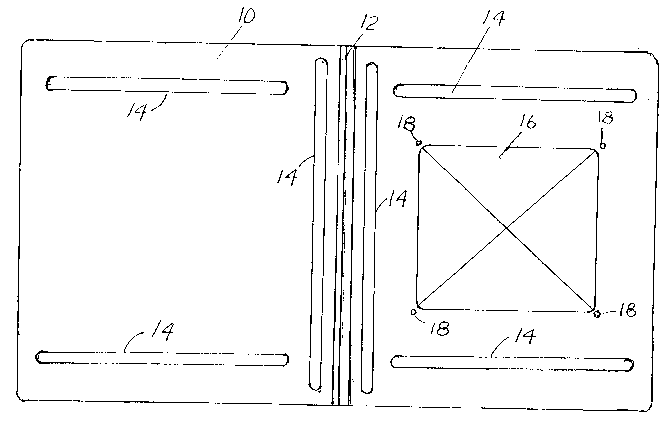Some of the information on this Web page has been provided by external sources. The Government of Canada is not responsible for the accuracy, reliability or currency of the information supplied by external sources. Users wishing to rely upon this information should consult directly with the source of the information. Content provided by external sources is not subject to official languages, privacy and accessibility requirements.
Any discrepancies in the text and image of the Claims and Abstract are due to differing posting times. Text of the Claims and Abstract are posted:
| (12) Patent: | (11) CA 2129814 |
|---|---|
| (54) English Title: | ROOF VENT RAIN DEFLECTOR |
| (54) French Title: | SYSTEME D'AERATION A L'EPREUVE DE LA PLUIE |
| Status: | Term Expired - Post Grant Beyond Limit |
| (51) International Patent Classification (IPC): |
|
|---|---|
| (72) Inventors : |
|
| (73) Owners : |
|
| (71) Applicants : |
|
| (74) Agent: | AVENTUM IP LAW LLP |
| (74) Associate agent: | |
| (45) Issued: | 1997-03-04 |
| (22) Filed Date: | 1994-08-09 |
| (41) Open to Public Inspection: | 1996-02-10 |
| Examination requested: | 1994-08-09 |
| Availability of licence: | N/A |
| Dedicated to the Public: | N/A |
| (25) Language of filing: | English |
| Patent Cooperation Treaty (PCT): | No |
|---|
| (30) Application Priority Data: | None |
|---|
A rain deflector for a vehicle roof vent consists of a pair of like panels one of which is fastened to the cap of the roof vent and moves therewith, and is hinged to the second panel which has the end remote from the hinge connected to slide along tracks on the vehicle roof. Each panel is substantially larger than the vent cap, to extend beyond the edges of the vent and prevents rain from entering the vent while permitting ventilationof air through the vent.
Un déflecteur de pluie pour un évent de toit de véhicule se compose d'une paire de panneaux identiques dont un est fixé sur le capuchon de l'évent de toit et se déplace avec celui-ci, et est articulé au deuxième panneau dont l'extrémité éloignée de la charnière est connectée de manière à glisser le long de rails sur le toit du véhicule. Chaque panneau est nettement plus grand que le bouchon d'évent, de manière à s'étendre au-delà des bords de l'évent et à empêcher la pluie de pénétrer dans l'évent tout en permettant la ventilation par l'évent.
Note: Claims are shown in the official language in which they were submitted.
Note: Descriptions are shown in the official language in which they were submitted.

2024-08-01:As part of the Next Generation Patents (NGP) transition, the Canadian Patents Database (CPD) now contains a more detailed Event History, which replicates the Event Log of our new back-office solution.
Please note that "Inactive:" events refers to events no longer in use in our new back-office solution.
For a clearer understanding of the status of the application/patent presented on this page, the site Disclaimer , as well as the definitions for Patent , Event History , Maintenance Fee and Payment History should be consulted.
| Description | Date |
|---|---|
| Inactive: Adhoc Request Documented | 2018-06-06 |
| Revocation of Agent Requirements Determined Compliant | 2018-05-18 |
| Appointment of Agent Requirements Determined Compliant | 2018-05-18 |
| Inactive: Expired (new Act pat) | 2014-08-09 |
| Letter Sent | 2010-05-11 |
| Inactive: Single transfer | 2010-04-23 |
| Letter Sent | 2008-08-14 |
| Inactive: Single transfer | 2008-08-05 |
| Inactive: Agents merged | 2003-12-09 |
| Grant by Issuance | 1997-03-04 |
| Small Entity Declaration Determined Compliant | 1996-03-19 |
| Application Published (Open to Public Inspection) | 1996-02-10 |
| All Requirements for Examination Determined Compliant | 1994-08-09 |
| Request for Examination Requirements Determined Compliant | 1994-08-09 |
There is no abandonment history.
| Fee Type | Anniversary Year | Due Date | Paid Date |
|---|---|---|---|
| MF (patent, 4th anniv.) - small | 1998-08-10 | 1998-08-07 | |
| MF (patent, 5th anniv.) - small | 1999-08-09 | 1999-08-06 | |
| MF (patent, 6th anniv.) - small | 2000-08-09 | 2000-07-18 | |
| MF (patent, 7th anniv.) - small | 2001-08-09 | 2001-08-01 | |
| MF (patent, 8th anniv.) - small | 2002-08-09 | 2002-08-07 | |
| MF (patent, 9th anniv.) - small | 2003-08-11 | 2003-07-25 | |
| MF (patent, 10th anniv.) - small | 2004-08-09 | 2004-07-27 | |
| MF (patent, 11th anniv.) - small | 2005-08-09 | 2005-07-25 | |
| MF (patent, 12th anniv.) - small | 2006-08-09 | 2006-07-12 | |
| MF (patent, 13th anniv.) - small | 2007-08-09 | 2007-06-22 | |
| MF (patent, 14th anniv.) - small | 2008-08-11 | 2008-06-19 | |
| Registration of a document | 2008-08-05 | ||
| MF (patent, 15th anniv.) - small | 2009-08-10 | 2009-07-29 | |
| Registration of a document | 2010-04-23 | ||
| MF (patent, 16th anniv.) - small | 2010-08-09 | 2010-06-30 | |
| MF (patent, 17th anniv.) - small | 2011-08-09 | 2011-08-05 | |
| MF (patent, 18th anniv.) - small | 2012-08-09 | 2012-08-08 | |
| MF (patent, 19th anniv.) - small | 2013-08-09 | 2013-08-07 |
Note: Records showing the ownership history in alphabetical order.
| Current Owners on Record |
|---|
| MILDRED GRACE PINDER |
| ELIZABETH CHERYL ZVANIGA |
| BRYAN NORMAN PINDER |
| Past Owners on Record |
|---|
| ROBERT CLAYTON PINDER |